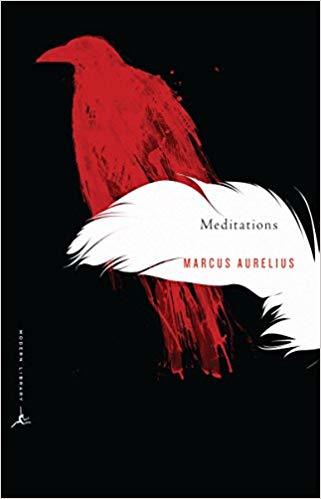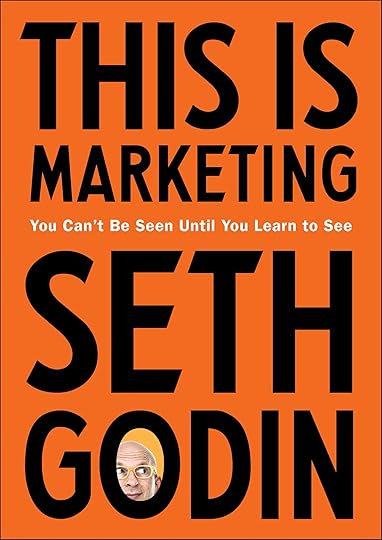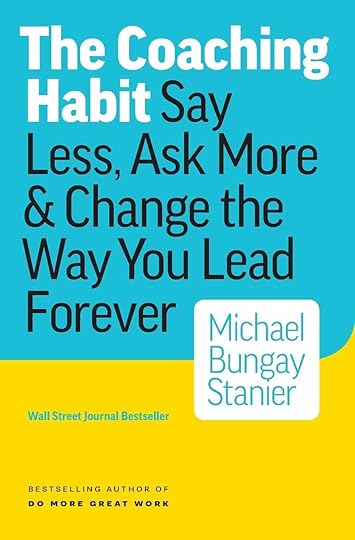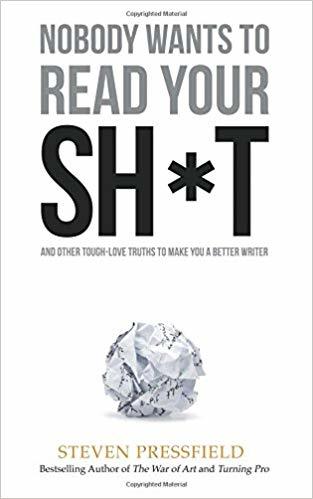Scott Perry's Blog, page 54
April 15, 2019
Hope or Faith?
It's not, of course, an either or question. There's certainly a time and place for both hope and faith.
Hope is a desire for a favorable future outcome.
Hope is passive. Hope happens to you.
If you've been shipwrecked and are drifting about the Pacific in a leaky liferaft, hope may well stave off despair until a tanker stumbles across and rescues you. But if you open a restaurant in town and merely hope that people come to dine, well that's just dumb.
Hope is not a strategy. It can, however, be an effective tactic that helps get you through a tough time.
Faith is trust that things happen "as they should."
Faith encourages deliberate action. Faith happens through you.
If you want to learn a language or to play an instrument, it's perfectly reasonable to have faith in your ability to do so. Having faith that good things will happen for you simply because you behave like a good person is a bit delusional.
Faith is not a tactic. It is an effective strategic filter you can employ as you pursue worthwhile endeavors.
I hope you have a great day. Keep the faith!
Scott
I’m a husband, father, teacher, and musician from Floyd, VA. I help others step into "what's next" with intention and integrity at Creative On Purpose, and I coach in Seth Godin’s online programs. I’ve written two books about cultivating excellence while making a difference available at this online bookstore.
April 8, 2019
When Is It Time to Pause?
Last time, I discussed the virtues of "going." Today, I share the value of pausing.
There's no authentication for the source, but this is a favorite quote of mine.
"Between stimulus and response, there is a space. In that space is your power to choose your response. And, in your response lies your growth and your freedom." - Viktor Frankl
To be clear, there are circumstances when stimulus leads directly to response without a chance of pausing. If I step on a garter snake in the garden there will be instant screaming, leaping, and hyperventilating. In situations like this, stimulus goes straight to the amygdala and initiates the fight or flight response immediately.
But even in cases that at first bypass the neocortex (where conscious thought resides), at some point you can stop, reflect, and frame your experience. And in any situation where there's a possibility of consideration, such as a conversation or email exchange, you have the power to insert a pause before choosing what to do or say next.
In "Isn't that interesting...?" I outlined an exercise for inserting a pause when confronted with misfortune, challenge, or difficulty. However, there are many similar exercises found in mindfulness meditation, yoga, and other spiritual and philosophical traditions.
Regardless of how you approach inserting it, seeking to establish a space between events and your reactions to them is vital for cultivating health and happiness for yourself and others. It's within that space that you can reflect on and choose your next step with intention and integrity. Within the pause is your opportunity to nurture the flourishing of everyone involved.
Knowing when to pause is at least as important as knowing when it's time to go. Cultivate both impulses to fly higher in any endeavor that makes a difference!
Scott
April 7, 2019
The Power of Pruning
“As the gardener, by severe pruning, forces the sap of the tree into one or two vigorous limbs, so should you stop off your miscellaneous activity and concentrate your force on one or a few points.” — Ralph Waldo Emerson
It's been years since we sold the farm where my wife and I raised our boys. We also raised chickens, dogs, cats, gardens, and more than a few eyebrows there. But the centerpiece was the small apple orchard.
Our farm was blessed with an abundance of fruit trees and berry bushes. The real treasure was a collection of dwarf apple trees that were grafts of stock that came from Thomas Jefferson's orchards at Monticello. These heirloom apple varieties had captivating names like "Arkansas Black," "Cox's Orange Pippin," "Duchess of Oldenburg," "Roxbury Russet," "Spitzenburg," "Stayman Winesap," and "Liberty."
I can't possibly describe how delicious these apples tasted. Imagine how an organic apple bought at the supermarket tastes compared to the mealy red delicious and multiply that by one hundred. That'll give you a rough idea. Until you've had an heirloom apple off the tree, you don't have any idea of what it means to truly eat an apple.
Since we moved to town, as winter turns to spring, I still think of this time of year as "pruning season." The time of year when, pruners in hand, I entered the orchard to do my level best to promote the vitality of the trees and help them realize their purpose.
Pruning is the strategic removal of diseased, damaged, dead, non-productive, structurally unsound, or otherwise unwanted growth in order to promote the trees overall health, longevity, and flourishing. Pruning may sound like a harsh act of elimination, but it's actually a generous act of enhancing the welfare of a living thing.
Done right and done well, pruning cultivates thriving. To prune is to say "goodbye" to what is no longer serving a purpose and to invite possibility, potential, and promise. As Emerson's quote above reminds us, pruning helps encourage vigor into where it is necessary and deserved and encourages integrity.
I've asked this question often since the arrival of spring. It's a really powerful process for "pruning" unnecessary clutter from my life and helping me be more "present" for the work and people in my life that matter most.
What excess or extraneous "stuff" can you prune from your life today that would enhance your sense of prosperity, progress, and purpose?
Keep flying higher!
Scott
When Is It Time to Go?
When is it time to get going with your endeavor?
Here's a hint, it's almost always time to go.
"Learning that does not lead to action is useless." - Epictetus
Sure, you could read another book, take another course, spend a little more time practicing and polishing. There may even be virtue and value in those activities.
But the most valuable lessons are learned through the experience of doing the thing you wish to do. It might not be pretty and it might not work but whatever the result, you'll learn far more than you would than by reading about the thing or listening to someone talk about it.
And you'll already be in motion. You can reflect, iterate, and pivot as you go. You'll be cultivating your curiosity, courage, and creativity. You'll nurture resolve and resiliency. You'll be developing will, forging meaning, and building identity.
"Just keep swimming, just keep swimming, just keep swimming, swimming, swimming." - Dory, Finding Nemo
A fish that isn't swimming is a dead fish, and dead fish stink.
Keep flying higher!
Scott
BTW, this is a favorite TED Talk on forging meaning and building identity.
If you're ready to go on an endeavor or deciding on one to go on, my recently published book, Endeavor: Cultivate Excellence While Making a Difference is packed with insight and inspiration.
April 1, 2019
The Genre of Your Life's Story
What's the genre of your life story?
Is it a deadly disaster or an action adventure? A melodrama or a thriller? A horror show or a survival tale? A tragedy or an epic? A black comedy or an improv? A surreal show or superhero story? Outlaw or empire western? Crime drama or whodunnit? Screwball romance or suspense? Farce or commentary? Space opera or speculative sci-fi? Parody or reality? Fairytale or hero's journey? Small town life or road trip? B Movie or cult classic?
The thing about deciding the genre of your life's story is that it's just like picking what to watch on Netflix. You get to choose.
When it's over, the movie of your life will be categorized, sorted, and filed by its genre. Where do you want your life's story to be cataloged? Why not start writing that movie? Why not start filming it right now?
Keep Flying Higher!
Scott
March 25, 2019
The Books That Built Me - How I Became Creative On Purpose
This article contains affiliate links. At no extra cost to you, if you make a purchase, Creative On Purpose receives a commission. This helps sustain CoP and its endeavors. Thank you!
"Books are the bees which carry the quickening pollen from one to another mind." - James Russell Lowell
Books have always been my go-to source of inspiration and information. These four books, more than any others, inform my journey in building Creative On Purpose into a sustainable brand that enhances the lives of those who collide with it.
Meditations: A New Translation, by Gregory Hays
I chronicled my lifelong relationship with the Roman Emperor, Marcus Aurelius in an article I was commissioned to write for the Modern Stoicism blog. Creative On Purpose began as a project intended to share the virtues of ancient Stoic philosophy as it applied to creative enterprises. Marcus' reminders to himself about gratitude, legacy, character, fate, service, and mortality are gems I tap into daily in my efforts to work with intention and integrity.
This Is Marketing: You Can't Be Seen Until You Learn to See, by Seth Godin
I find every book by Seth valuable, but TIM is a crowning achievement. Seth "reclaims" marketing and reminds us that it is not to be confused with advertising. He then champions the cause of telling true stories to people whose lives will be enhanced by hearing them. Like the online course that inspired it, the lessons of TIM won't just make you a better marketer, they'll make you a better person.
The Coaching Habit: Say Less, Ask More & Change the Way You Lead Forever, by Michael Bungay Stanier
I was introduced to Michael's book in Seth Godin's altMBA. Its impact has been profound on me to the point that coaching is now my primary occupation. But we're all coaches in at least the informal sense, and this book teaches seven simple questions that will help you do it with greater empathy and effect. It also opens with an easy and effective four-step process for building habits that stick.
Nobody Wants to Read Your Sh*t: Why That Is and What You Can Do About It, by Steven Pressfield
The title is bitter medicine, but it promotes long-term health and happiness for storytellers, and we are all storytellers. Steve shares lessons learned as an ad copywriter, novelist, screenplay writer, non-fiction author, self-help guru, and more. His approach is built on Joseph Campbell's Hero's Journey and delivered with equal measures of encouragement and caution. Pressfield's War of Art, Turning Pro, and The Artist's Journey trilogy are also worth your time and attention.
These four books, more than any other of the hundreds I've read, have had the biggest impact on my journey in building the Creative On Purpose brand and developing and delivering on its promise to help others fly higher in endeavors that make a difference. You can find them and other helpful resources in the Creative On Purpose Bookstore.
Let's keep flying higher together!
Scott
The Books That Built My Endeavor - How I Became Creative On Purpose
This article contains affiliate links. At no extra cost to you, if you make a purchase, Creative On Purpose receives a commission. This helps sustain CoP and its endeavors. Thank you!
"Books are the bees which carry the quickening pollen from one to another mind." - James Russell Lowell
Books have always been my go-to source of inspiration and information. These four books, more than any others, inform my journey in building Creative On Purpose into a sustainable brand that enhances the lives of those who collide with it.
Meditations: A New Translation, by Gregory Hays
I chronicled my lifelong relationship with the Roman Emperor, Marcus Aurelius in an article I was commissioned to write for the Modern Stoicism blog. Creative On Purpose began as a project intended to share the virtues of ancient Stoic philosophy as it applied to creative enterprises. Marcus' reminders to himself about gratitude, legacy, character, fate, service, and mortality are gems I tap into daily in my efforts to work with intention and integrity.
This Is Marketing: You Can't Be Seen Until You Learn to See, by Seth Godin
I find every book by Seth valuable, but TIM is a crowning achievement. Seth "reclaims" marketing and reminds us that it is not to be confused with advertising. He then champions the cause of telling true stories to people whose lives will be enhanced by hearing them. Like the online course that inspired it, the lessons of TIM won't just make you a better marketer, they'll make you a better person.
The Coaching Habit: Say Less, Ask More & Change the Way You Lead Forever, by Michael Bungay Stanier
I was introduced to Michael's book in Seth Godin's altMBA. Its impact has been profound on me to the point that coaching is now my primary occupation. But we're all coaches in at least the informal sense, and this book teaches seven simple questions that will help you do it with greater empathy and effect. It also opens with an easy and effective four-step process for building habits that stick.
Nobody Wants to Read Your Sh*t: Why That Is and What You Can Do About It, by Steven Pressfield
The title is bitter medicine, but it promotes long-term health and happiness for storytellers, and we are all storytellers. Steve shares lessons learned as an ad copywriter, novelist, screenplay writer, non-fiction author, self-help guru, and more. His approach is built on Joseph Campbell's Hero's Journey and delivered with equal measures of encouragement and caution. Pressfield's War of Art, Turning Pro, and The Artist's Journey trilogy are also worth your time and attention.
These four books, more than any other of the hundreds I've read, have had the biggest impact on my journey in building the Creative On Purpose brand and developing and delivering on its promise to help others fly higher in endeavors that make a difference. You can find them and other helpful resources in the Creative On Purpose Bookstore.
Let's keep flying higher together!
Scott
The Fine Art of Blundering - Stumbling Toward Excellence
Want to develop your potential? Awaken the giant within? Achieve excellence in an endeavor worthy of your time and talents?
Some say it takes guts, grit, and grind. Others say it requires planning, purpose, and perseverance. Perhaps it's merely up to fate, faith, and fortune.
Regardless of how you realize your promise, there's one strategy that can really help you get out of your head and out of your own way. Stop taking yourself so damn seriously!
Sure, dream big, go large, and fly high; but remember that things rarely turn out just the way you think they will or should. Embrace the fact that you, and everyone else, are stumbling their way toward excellence. Adopt a posture of blundering.
Here are just a few of the benefits of the fine art of blundering:
Helps you acknowledge ignorance. Opens the door for listening and learning.
Encourages embracing the process and non-attachment to results beyond your control.
Cultivates presence. You can only influence what happens next in the here and now. Choose how you frame your situation, decide the next step, and take it.
Discourages vanity, ego-driven activity, and hubris. Inspires asking for assistance and inviting collaboration.
Promotes playfulness and imagination.
The fine art of blundering is a discipline that not only boosts your health and happiness, but it also nurtures the virtues of humility, resilience, and wisdom.
What are you blundering forward into today?
Let's keep flying higher together!
Scott
March 18, 2019
An End to Suffering
For some, merely seeing the word "suffer" triggers memories and feelings of pain, injury, or loss. Why is that? Where does suffering even come from?
Ancient wisdom tells us that it's our proclivity for attachment.
“Attachment is the root of suffering.” - The Buddha
Why human beings are attached to ideas and impressions about themselves, others and their situation that causes suffering are less important than recognizing that these attachments are choices. You don't have to cling to beliefs, attitudes, and behaviors that are not serving you.
But how can you make "better" choices? Choices that, instead of feeding your suffering, cultivate a sense of thriving, even as you struggle? Here are five additional "A's" to help you free yourself from the self-imposed suffering of attachment.
Acknowledgment - Struggle and stress are natural. Without them, you couldn't define, let alone experience, peace, and prosperity. Don't avoid challenge or misfortune, embrace them. They are opportunities for you to cultivate resilience and resolve.
"It is difficulties that show what we are." - Viktor Frankl
Awareness - To end suffering, you must first recognize when you are suffering. Only then can you detach from it, hold it at arm's length, and take a longer, more objective look. Chances are you'll find yourself attached to untrue stories about the past or unrealistic stories you're projecting into the future. Only in the present can you reframe perception and take action that promotes greater health and happiness.
"If you are depressed you are living in the past. If you are anxious you are living in the future. If you are at peace you are living in the present." - Lao Tzu
Acceptance - Your circumstances, your situation, other people, and social, political, and economic forces are entirely beyond your control. You don't have to meekly surrender to fate, but "resistance is futile." Accepting what happens isn't weakness, it's where the opportunity to embrace possibility and promise reside.
"Accept the things to which fate binds you, and love the people with whom fate brings you together. Do so with all your heart." - Marcus Aurelius
Agency - Almost nothing is within your direct control, but you do possess everything you need to flourish through any "hardship." You command how you choose to see things and what action to take. This is where your ability to influence "what happens next" lies.
"Happiness and freedom begin with a clear understanding of one principle. Some things are within our control and some things are not." - Epictetus
Appreciation - Gratitude is the ultimate happiness booster. Expressing appreciation for what you already possess helps avoid the unhealthy attachments of want and embrace adversity as opportunities to cultivate resilience and will.
"There are lessons to be learned from any outcome. There’s also the opportunity to practice the virtues of patience, humility, and acceptance. Any result can be appreciated and leveraged to build character, courage, and will." - Scott Perry
Ready to suffer less and thrive more through all of life's ups and down? Remember these five A's and make more intentional and principled choices about them!
Let's keep flying higher together!
Scott
Readers of Endeavor will recognize that most of what I shared here is repurposed content from that book. If you appreciated or were inspired by this, and haven't checked out Endeavor, why not grab the ebook or paperback on Amazon?
March 14, 2019
Who's In Charge?
“Happiness and freedom begin with a clear understanding of one principle. Some things are within our control, and some things are not.” - Epictetus
Agency is as intoxicating as it is elusive. When the breaks go your way, it’s easy to believe it’s due to your intelligence and planning. When things go awry, it’s easy to blame others or fate.
The truth is, very little is within your control, but at the same time, you do control everything required to maintain your sense of well-being and prosperity.
You ultimately control only two things. You determine how you choose to perceive yourself, others, and your situation. You also control what you decide to do next.
Everything else is beyond your control.
Your body is subject to disease, decline, and ultimately death. The attitude and behavior of others are for them to decide, not you. And there are forces far more powerful than you at work in the social, political, economic, cultural, and geographical arenas.
However, many things beyond your absolute control are within your influence.
You can eat well and exercise to promote a healthy body. You can adopt a compassionate posture toward others that encourage them to engage their goodness as well.
And you can choose your “battles” and leverage your assets to persuade results that enhance the prospects for all.
Scott
This is an excerpt from the book, Endeavor: Cultivate Excellence While Making a Difference.







